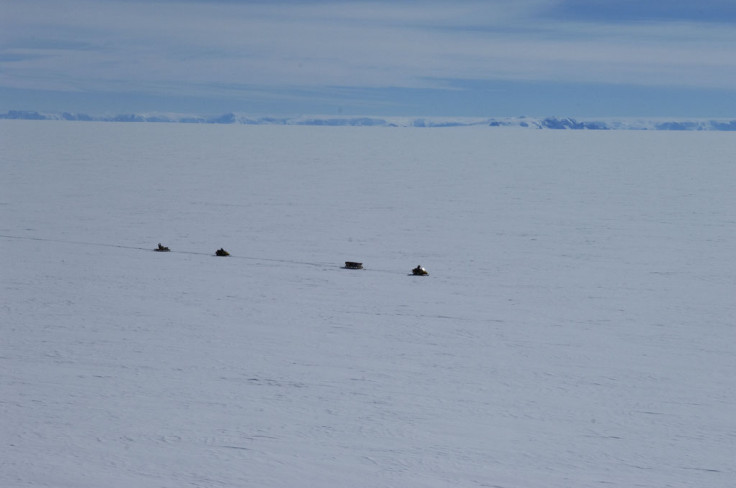Antarctica: Largest ice shelf melting fast from above and below

Warm air and ocean currents are both acting on Antarctica's largest ice shelf Larsen C and causing it to thin and become less stable, says a new study.
The loss of the ice-shelf could raise present sea-level projections by 50 cms.
Settling the debate on what is leading to the melt, research from the British Antarctic Survey (BAS) found that air is being lost from the top layer of snow probably due to increased melting by a warmer atmosphere.
In addition, Larsen C is losing ice below from warmer ocean currents or changing ice flow.
"We now know that two different processes are causing Larsen C to thin and become less stable," said Paul Holland from the BAS who led the new research.
The thinning from above and below has seen the ice shelf lose an average of four metres of ice in 14 years from 1998 and has lowered by an average of one metre at the surface.
Because ice shelves float on water, Larsen C's loss would not by itself raise global sea levels.
But if the ice-shelf over two and a half times the size of Wales were to collapse, it would trigger a faster flow of the tributary glaciers behind it and that would contribute to sea-level rise.
The team predicts that a collapse could occur within a century, or even sooner and with little warning. A crack is forming in the ice which could cause it to retreat further than previously observed.
The ice shelf appears also to be detaching from a small island called Bawden Ice Rise at its northern edge.
Its neighbours Larsen A and B collapsed in 1995 and 2002.
Professor David Vaughan, glaciologist and Director of Science at BAS, says: "When Larsen A and B were lost, the glaciers behind them accelerated and they are now contributing a significant fraction of the sea-level rise from the whole of Antarctica. Larsen C is bigger and if it were to be lost in the next few decades then it would actually add to the projections of sea-level rise by 2100.
"We expect that sea-level rise around the world will be something in excess of 50 cm higher by 2100 than it is at present and that will cause problems for coastal and low-lying cities. "
The survey team combined satellite data and eight radar surveys captured during a 15-year period from 1998–2012.
The study was published in the journal The Cryosphere.
Melting continent
The Antarctic Peninsula is one of the fastest warming regions on Earth, with a temperature rise of 2.5°C over the last 50 years.
From 2003 to 2014, the region lost around 92 billion tonnes of ice per year, said a Princeton study which found that since 2008, ice loss from West Antarctica's unstable glaciers doubled from an average annual loss of 120 billion tonnes of ice to twice that by 2014.
The UN's Intergovernmental Panel on Climate Change (IPCC) reported in 2013 that ice loss from Antarctica probably increased from 30 billion tonnes a year in the decade to 2001 to 147 billion tonnes annually in the following decade.
Between 1993 and 2010, sea levels have risen by about 3.2mm a year said the IPCC.
It has projected that warmer seas and ice loss would drive up the global mean sea level by between 40 and 63 cm by 2100, and as much as 82 cm at the top end of scenarios for greenhouse-gas emissions.
However, even that is a conservative estimate, fear experts who do not rule out a 3m rise in levels given the present rate of melt in West Antarctica.
© Copyright IBTimes 2025. All rights reserved.





















